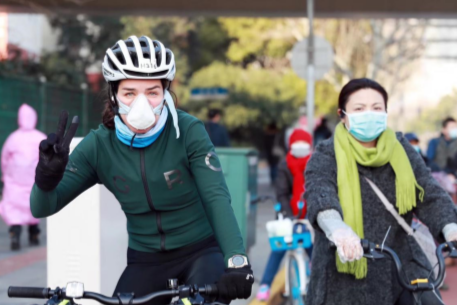
When is the turning point for coronavirus outbreak? Key indicators
SIIS report | Updated: 2020-02-17 14:25

The war against COVID-19 epidemic has come to a critical moment. Currently, there are two major views on when the turning point will be. Prudent optimists think that it will come sometime between February 10 to 15, right after China's Lantern Festival. According to Professor Zhong Nanshan, academician of Chinese Academy of Engineering, director of the National Clinical Research Center for Respiratory Disease, and head of the High-level Panel of Experts, the latent period of the novel coronavirus is usually 3 to 7 days and 24 days at maximum. With the nationwide restrictions on population flow, both the peak and turning point of the epidemic will appear around the Lantern Festival.2 On this trend, the epidemic may be over by the end of April.3
Pessimists, however, predict that the turning point will come as late as April, with confirmed cases surpassing 70,000. For instance, a research done by Professor Joseph T. Wu's team at the School of Public Health, Li Ka Shing Faculty of Medicine, Hong Kong University, published on The Lancet on January 31, forecast the turning point of the epidemic to appear in April based on latest mathematical modelling. Meanwhile, the research points out that "[t]o possibly succeed, substantial, even draconian measures that limit population mobility should be seriously and immediately considered in affected areas, as should strategies to drastically reduce within-population contact rates through cancellation of mass gatherings, school closures, and instituting work-fromhome arrangements, for example."4 Now that all the recommended measures have been adopted, the gloomy forecast is not quite likely to become reality.
In fact, the turning point of the epidemic not only depends on the objective laws of the development of the novel coronavirus, but it is also a function of the collective efforts of the Chinese government and people. As Professor Chen Wei, academician of Chinese Academy of Engineering and researcher at the Institute of Military Medical Sciences of the PLA Academy of Military Sciences, warns, although the turning point is coming soon, the possibility of recurring of the epidemic still remains, and thus it is necessary to plan for the worst and make fullest preparation for long-term fight against it.5 In the same vein, Mr. Zhang Wenhong, director of the Department for Infectious Diseases at Huashan Hospital Affiliated to Fudan University and a member of the Shanghai special medical team for COVID-19, calls for support from the general public, saying that "staying home and refraining from going out is also a contribution to our fight [against the epidemic]."6
Therefore, it is believed that despite the positive progresses in prevention and control of the novel coronavirus, the turning point of the epidemic will be determined by further endeavor of the Chinese government and people. China is facing new challenges especially in the next one to two weeks, as millions of people from all over the country are returning to work in mega-cities after the Spring Festival. If the number of new infections remains low two weeks later, it can be said that the turning point has come except for Hubei.
In general, strong epidemic control, effective medical treatment to COVID-19 patients, and enhancing rehabilitation rate are three interrelated key missions of China's war against the epidemic. Only when all of them are achieved, can China win the war in the shortest time.
Above all, a decrease of new confirmed and suspected cases will be the most direct indicator of the turning point and a clear proof of the effectiveness of the prevention and control measures. At present, despite the increase of the absolute number of new confirmed and suspected cases, its growth rate has been on the decline for days. If such trend continues for another week or two, then the first mission will be accomplished.
Next, as the biggest threat to public health, severe cases and COVID-19-caused deaths are the main roots of public fear of the epidemic. A decreasing number of severe cases and deaths will indicate that the medical treatment is taking effect and that the severity of the epidemic is in check. Up to now, the mortality rate of COVID-19 has remained rather low except in Hubei, which means the epidemic has been under tight control in most Chinese regions. After classified treatment and a greater number of intensive care unit (ICU) facilities are introduced in Hubei, the mortality rate there is expected to shrink as well.
Finally, the ultimate victory will be achieved when all COVID-19 patients are cured. Now, the rehabilitation rate is increasing steadily with enhanced measures and capabilities of medical treatment, while the public has developed more understanding about COVID-19 and strengthened self-protection. Both will help reduce the number of new cases and augment the rehabilitation rate.





















.jpg)









No hay comentarios:
Publicar un comentario